Goguryeo Garden (고구려가든)
1.8Km 2024-04-07
68 Manseon 1-ro, Seolcheon-myeon, Muju-gun, Jeonbuk-do
Goguryeo Garden is a Korean restaurant offering grilled meat cuts and Jeollado-style Korean table d'hote. Situated near Muju Resort and ski area, it attracts many visitors seeking a meal after enjoying leisure sports. The signature dish is the saeng deungsim gui (grilled sirloin), perfect for recharging after a sweaty activity. Sanchae jeongsik (wild vegetable dish set menu), featuring dishes such as beef bulgogi, soybean paste jjigae, grilled deodeok, and grilled yellow croaker, is also highly popular.
Deogyusan Resort Sledding Hills (무주덕유산리조트 썰매장)
3.5Km 2024-04-07
185, Manseon-ro, Muju-gun, Jeonbuk-do
+82-63-320-7336
Deogyusan Resort is a representative mountain resort in Korea, located within Deogyusan National Park. Blending harmoniously with nature, visitors can take in the nature as well as enjoy art and health. The resort is located on the foothill of Deogyusan Mountain, near the famous Gucheondong Valley.
Deogyusan Ski Resort (무주덕유산리조트 스키장)
3.5Km 2024-04-06
185, Manseon-ro, Muju-gun, Jeonbuk-do
+82-63-322-9000
Muju Deogyusan Resort is one of Korea’s most famous mountain peak ski resorts. Covering an area of over seven million square meters, the resort is located in the Gucheon-dong Valley, at the base of the famous Deogyusan Mountains. Nature lovers will particularly enjoy visiting the resort, since it is located in one of Korea’s beautiful national parks, and was specially designed to harmonize with its natural surroundings.
Deogyusan National Recreational Forest (국립 덕유산자연휴양림)
3.7Km 2024-04-07
530-62, Gucheondong-ro, Muju-gun, Jeonbuk-do
+82-63-322-1097
Deogyusan National Recreational Forest is located south of Muju near Gucheon-dong Valley and Deogyusan National Park. The lush forest of larch and pine nut trees creates a cool ambience for relaxation. The recreational forest features a biking trail, and is near Deogyusan Ski Resort and other leisure facilities.
Muju Baengnyeonsa Temple (백련사(무주))
4.4Km 2024-04-07
580, Baengnyeonsa-gil, Muju-gun, Jeonbuk-do
+82-63-322-3395
Baengnyeonsa Temple is located in the upper part of Gucheondong Valley on Deogyusan Mountain. It is said that during the Silla Kingdom, a white lotus flower bloomed here, and that's why the temple is called Baengnyeonsa (lit. White Lotus Temple). The temple is the only remaining temple out of 14 that were built in the Gucheon-dong area of Muju. After walking over Baengnyeongyo Bridge at the entrance of the temple, you will come to a stone stairway. At the top is the main sanctuary. The majesty and beauty of the main sanctuary is well complemented by the mountains. The Mokjosamjonbul Stone Buddha within the main building is presumed to have been built in the latter half of the Joseon dynasty. Past Myeongbujeon is Baengnyeonsa’s Sajeokbi tombstone, and the workmanship of the carved calligraphy is very highly regarded.
The Thirty Three Sights of Mujugucheondong Valley (무주 구천동 33경)
4.4Km 2024-04-07
580 Baengnyeonsa-gil, Seolcheon-myeon, Muju-gun, Jeonbuk-do
The Thirty Three Sights of Mujugucheondong Valley refers to thirty three scenic spots along the route from Seokmo Mountain's Rajetongmun Gateway to Baengnyeonsa Temple on Deogyusan Mountain. Visitors can witness spectacular rock formations and rare flora and fauna in the primeval forest. It's recommended to explore from the sight 1 Rajetongmun Gateway to the sight 14 Sugyeongdae Valley as a driving route, while exploring from the sight 15 Wolhatan Valley to the sight 33 Hyangjeokbong Peak as a trekking route.
Moonriver / 문리버펜션
4.6Km 2025-03-04
289-4 , Gucheondong-ro, Muju-gun, Jeonbuk-do
+82-63-322-7009, +82-10-2004-0738
Moon River Pension in Muju-gun, Jeollabuk-do, is an eco-friendly log-built pension on the edge of the majestic Deogyusan Mountain. In summer, guests can sit at an outdoor table or play in the cool river, or take an evening stroll through Gucheondong Valley and likely meet fireflies. Deogyusan National Park and Muju Resort are 5-10 minutes away by car, and Taekwondo Park just 20 minutes away. The nearby Baekdudaegan Ecological Education Center in Geochang, with its Forest Experience Center for children, is great for families with youngsters.
Hyangjeokbong Peak (Deogyusan Mountain) (향적봉(덕유산))
5.0Km 2024-04-07
1 Deoksan-ri, Anseong-myeon, Muju-gun, Jeonbuk-do
Hyangjeokbong Peak, standing at an elevation of 1,614 meters, is the highest peak of Deogyusan Mountain. It is an ideal destination for hiking year-round, but particularly renowned for its breathtaking winter scenery, earning a reputation as a popular spot for snow-covered mountain hikes. Visitors can reach the summit of Hyangjeokbong Peak by taking a gondola from the nearby Muju Resort to Seolcheonbong Peak, then embarking on a roughly 20-minute hike from Seolcheonbong Peak. Even beginners can enjoy the fantastic views of Deogyusan Mountain without much difficulty, contributing to its popularity.
Deogyusan National Park (Namdeogyu Section) (덕유산국립공원(남덕유분소))
7.7Km 2021-07-13
Sojeong-ri, Geochang-gun, Gyeongsangnam-do
+82-63-322-3174
Designated as a national park in 1975, Deogyusan National Park covers four counties. Besides Hyangjeokbong Peak, Deogyusan Mountain's highest peak in Muju, all the other peaks lie within Geochang. While the park features beautiful waters and rocks at Wolseonggyegok Valley in Buksang-myeon, Geochang, it also boast nature's beauty in Muju with creeks and valleys like Mahakdong Valley, Sangyeodeomgyegok Valley, and Songgyesa Valley.
Jeoksangsan Mountain (적상산)
8.8Km 2024-04-07
Goemok-ri, Muju-gun, Jeonbuk-do
+82-63-322-4174
As one of the best scenic mountains in Korea, Jeoksangsan Mountain (1,030.6 meters) showcases imposing, steep rock walls. Jeoksangsan, also called Red Skirt Mountain, got its name from the view of red maple trees around cliffs in fall that makes the mountain look like a giant red skirt. The mountain boasts a variety of attractions from Hyangnobong Peak (1,029 meters), Cheonilpokpo Falls, Songdaepokpo Falls, Jangdobawi Rock, Janggunbawi Rock, and Allyeomdae Cliff.
The rugged shape of the mountain was considered ideal for building a fortress. And after Jeoksangsan became a designated site for storing Joseonwangjo Sillok (annals of the Joseon Dynasty), the fortress surrounding it was further rebuilt. The mountain is also home to Anguksa Temple, an ancient temple built in 1227 (during the 3rd year of King Chungryeol’s reign) by Monk Wolin. The mountain can easily be climbed by hiking or by vehicle; there is a paved road stretching over 15 kilometers that leads to the top of the mountain thanks to the construction of Muju Power Plant, letting tourists visit Sanjeong Lake and Anguksa Temple conveniently.

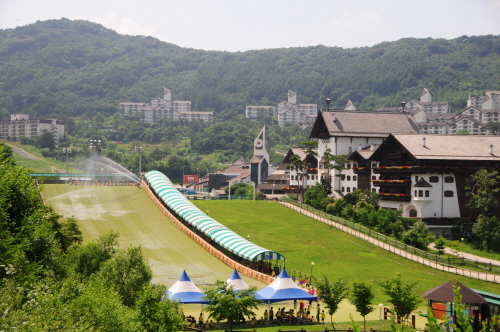
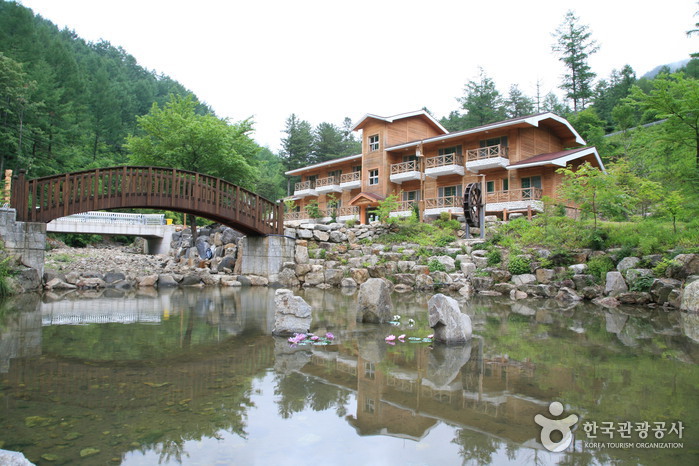
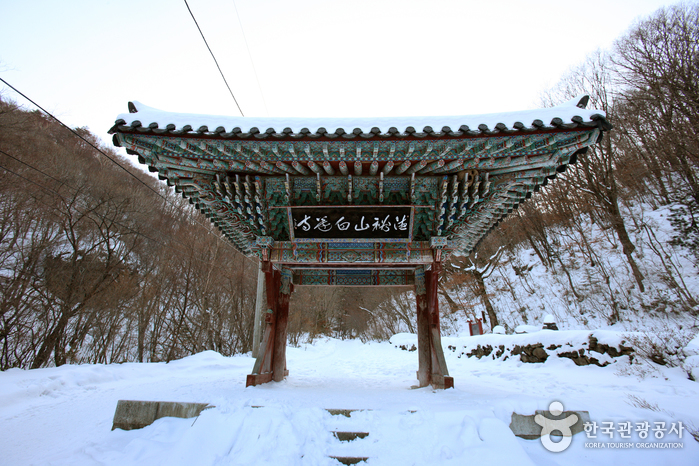
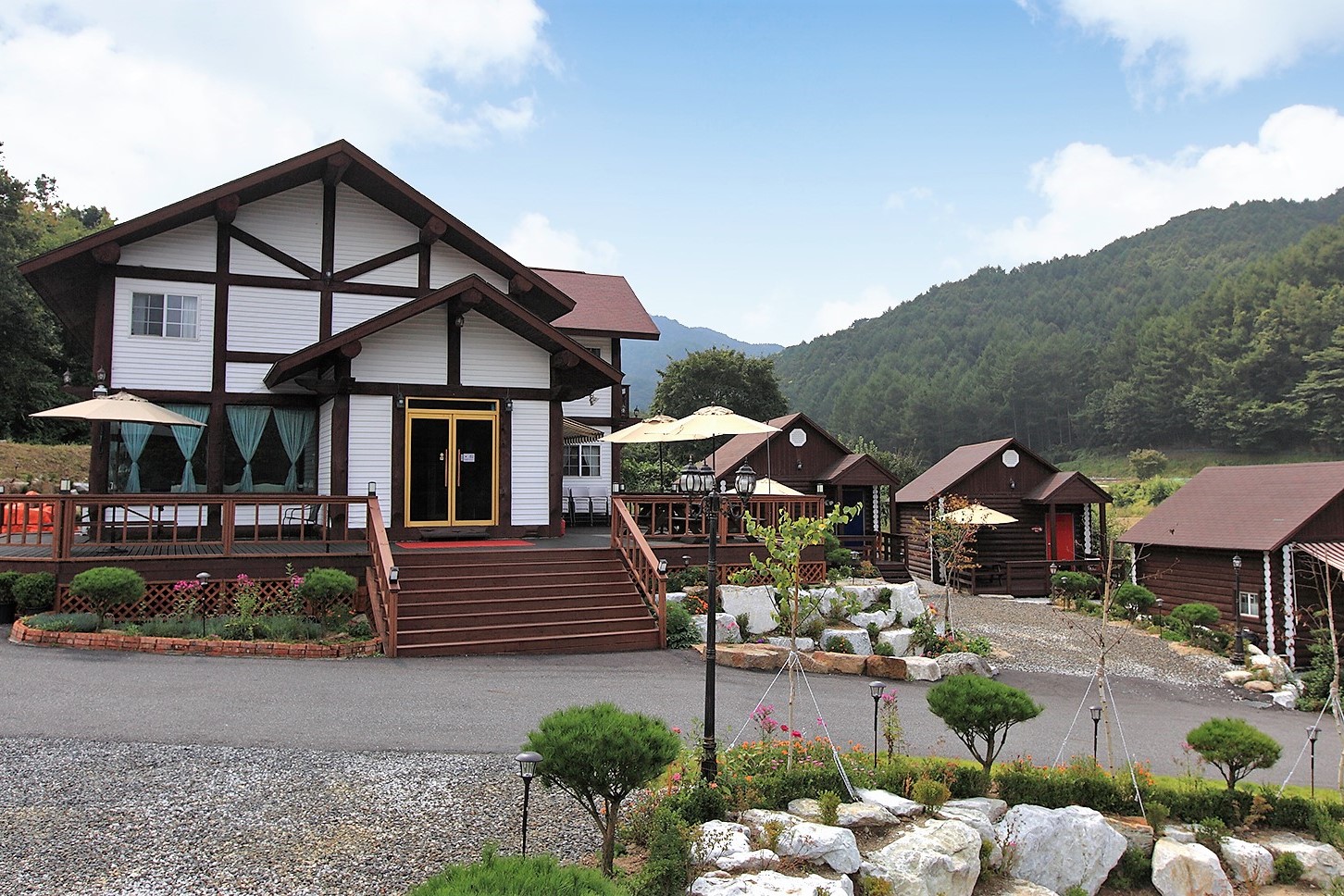
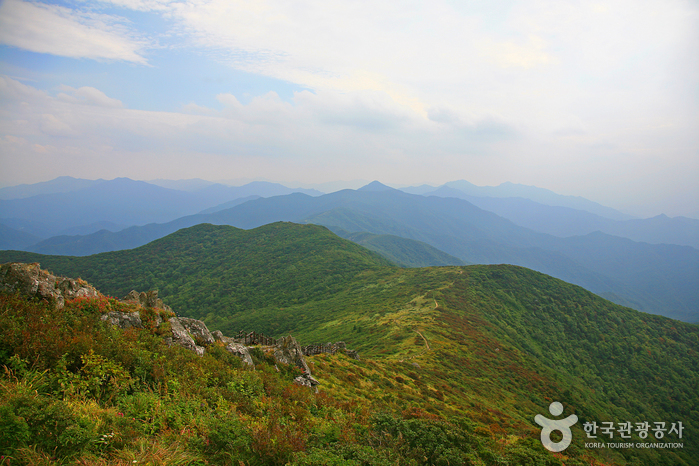
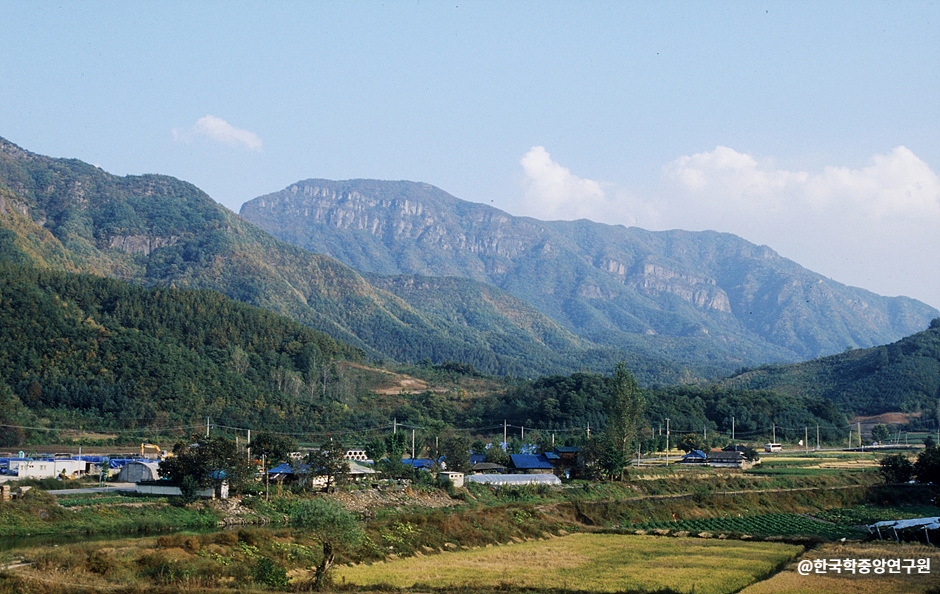
 English
English
 한국어
한국어 日本語
日本語 中文(简体)
中文(简体) Deutsch
Deutsch Français
Français Español
Español Русский
Русский